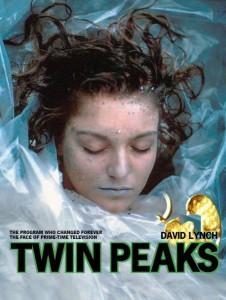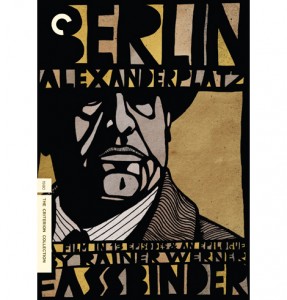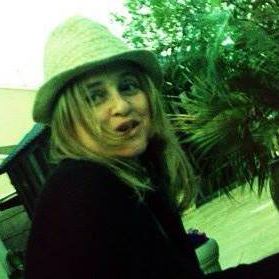By Christina Kallas
 Filmmakers have always flirted with television. One has only to recall, from 1980, Rainer Werner Fassbinder’s Berlin Alexanderplatz, a series of, notably, thirteen 52-minute episodes plus an epilogue, or David Lynch’s Twin Peaks (1990/1991), which lasted for two seasons, the first with eight and the second with twenty two 50-minute episodes (the pilots were feature-length) or indeed Lars Von Trier’s The Kingdom (1994), a series of eleven 55-minute episodes. Cinema’s flirtation with the new form in fact started much earlier, perhaps with Roberto Rossellini’s infamous 1962 news conference where he declared that cinema, the medium for which he had directed such classics as Rome, Open City and Paisan, was dead and that he would henceforth be making movies for television.
Filmmakers have always flirted with television. One has only to recall, from 1980, Rainer Werner Fassbinder’s Berlin Alexanderplatz, a series of, notably, thirteen 52-minute episodes plus an epilogue, or David Lynch’s Twin Peaks (1990/1991), which lasted for two seasons, the first with eight and the second with twenty two 50-minute episodes (the pilots were feature-length) or indeed Lars Von Trier’s The Kingdom (1994), a series of eleven 55-minute episodes. Cinema’s flirtation with the new form in fact started much earlier, perhaps with Roberto Rossellini’s infamous 1962 news conference where he declared that cinema, the medium for which he had directed such classics as Rome, Open City and Paisan, was dead and that he would henceforth be making movies for television.
Today these filmmakers could be seen as the avant-garde of a form which was still evolving at the time: that of the television series that would educate and elevate rather than just entertain and sell products through advertising. They were interested in reaching the kinds of audience accessible only to broadcasts, but primarily they were fascinated by the possibilities of the long narrative form. “Television allows you to tell a story over time,” points out David Lynch, “something cinema doesn’t.”
In the last few years the phenomenon of migration from the movie format to the long-form narrative (can House of Cards, whose 13 episodes were released on internet platform Netflix in 2013 all on the same day, still be considered television?) has been increasingly gaining momentum, even among established mainstream filmmakers: Steven Spielberg signed the series The Pacific, Martin Scorsese Boardwalk Empire, and more are sure to follow.
 Perhaps the biggest challenge to the present status quo and the television–film divide is connected with the oldest question since the birth of the moving pictures: what is cinema? The common consensus is that today, with the emergence of new technologies, medium distinctions are becoming increasingly blurred – and we cannot regard any “medium” as an absolute fixed category. Nevertheless, cinema is still considered by most as connected to the darkened theater of the classic period: two uninterrupted hours in the dark; film festivals; theatrical distribution. Many will even indulge in nostalgia and use the term “cinema” only when 35mm film is involved.
Perhaps the biggest challenge to the present status quo and the television–film divide is connected with the oldest question since the birth of the moving pictures: what is cinema? The common consensus is that today, with the emergence of new technologies, medium distinctions are becoming increasingly blurred – and we cannot regard any “medium” as an absolute fixed category. Nevertheless, cinema is still considered by most as connected to the darkened theater of the classic period: two uninterrupted hours in the dark; film festivals; theatrical distribution. Many will even indulge in nostalgia and use the term “cinema” only when 35mm film is involved.
There is, however, another possible perspective: if we see cinema as storytelling that is (primarily) using image and sound and which is as much about exploration as it is about spectacle, a medium which can penetrate deep into reality by challenging familiar ways of thinking and feeling – by questioning the very frameworks of reality; if we consider Bazin’s argument in “What Is Cinema?” that the idea precedes the invention and hence is superior to the technical means used to achieve it, then it is possible that there is no better term for audiovisual storytelling, none more inclusive, and definitely none which raises the stakes as much as this one does. Eisenstein’s vision of cinema as an “excellent instrument of perception” also reminds us how, early on, the function of cinema was debatable, and not taken for granted. Perhaps, once again, we need to stop taking the concept of “cinema” for granted and open the field as generously as we can. Perhaps cinema is, indeed, everywhere. Perhaps rather than a medium or a concrete format, cinema is a state of mind – and it can be found in TV as well as in the movies.
Indeed, in the last decade or two, the great explosion of cinematic narrative complexity seems to be gravitating more and more towards TV – possibly, among other reasons, because there are only so many threads and subtleties you can introduce into a two-hour film, but also because TV is traditionally more of a writer’s medium and so perhaps more of a home to sophisticated writing.
 Moreover, American TV is said to be a writers’ paradise, and in my book Inside the Writers’ Room (that includes a series of conversations with writers from a writer’s point of view) I have attempted to have a close look into that paradise but also to test the myth of absolute creative freedom. How is the writer’s role defined in television and what are the main differences from a screenwriter’s role in the film industry–and how does this influence content? How collaborative is the writing process of modern day TV writing? Does the prevailing idea that the best cinematic storytelling can only result from the mind of a single genius (the auteur theory) still hold? How important is the writer’s presence on set and during the whole process? The spectrum of TV creating is certainly broad, but there are striking similarities between the different approaches as well as some clearly emerging patterns. This is the first of a series of bi-weekly guest posts with which I will be sharing some of my insights and conclusions–ideally with a ton of input from you.
Moreover, American TV is said to be a writers’ paradise, and in my book Inside the Writers’ Room (that includes a series of conversations with writers from a writer’s point of view) I have attempted to have a close look into that paradise but also to test the myth of absolute creative freedom. How is the writer’s role defined in television and what are the main differences from a screenwriter’s role in the film industry–and how does this influence content? How collaborative is the writing process of modern day TV writing? Does the prevailing idea that the best cinematic storytelling can only result from the mind of a single genius (the auteur theory) still hold? How important is the writer’s presence on set and during the whole process? The spectrum of TV creating is certainly broad, but there are striking similarities between the different approaches as well as some clearly emerging patterns. This is the first of a series of bi-weekly guest posts with which I will be sharing some of my insights and conclusions–ideally with a ton of input from you.
Next Up: Post #2: So What Exactly Happens in the Room? (scheduled for May 14th )
If you are interested in reading more, including the full interviews on their process as writers with creators such as Terence Winter, Tom Fontana, Warren Leight, Robert Carlock, Janet Leahy and many more, you can purchase the book Inside the Writers’ Room. Conversations with American Writers here.
 Christina Kallas has written and produced several feature films and TV shows in Europe before she relocated to New York in 2011, where she is currently teaching at Columbia University’s and Barnard College’s Film Programs, and editing her next feature film (and her first as a director,) 42 Seconds of Happiness. She is the author of six books in her three writing languages, including the above book as well as Creative Screenwriting: Understanding Emotional Structure (London/New York, 2010). Most recently, she was honored for her outstanding contribution to the international writers’ community in her eight years of tenure as President of the Federation of Screenwriters in Europe. You can reach her at improv4writers@gmail.com and follow her on Facebook or Twitter and join the Writers Improv Studio group page for updates.
Christina Kallas has written and produced several feature films and TV shows in Europe before she relocated to New York in 2011, where she is currently teaching at Columbia University’s and Barnard College’s Film Programs, and editing her next feature film (and her first as a director,) 42 Seconds of Happiness. She is the author of six books in her three writing languages, including the above book as well as Creative Screenwriting: Understanding Emotional Structure (London/New York, 2010). Most recently, she was honored for her outstanding contribution to the international writers’ community in her eight years of tenure as President of the Federation of Screenwriters in Europe. You can reach her at improv4writers@gmail.com and follow her on Facebook or Twitter and join the Writers Improv Studio group page for updates.





